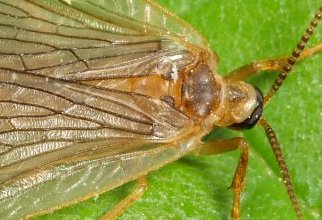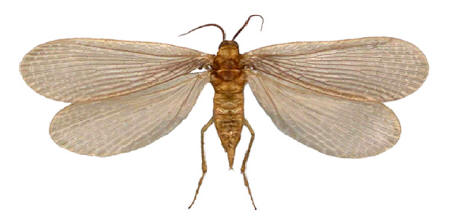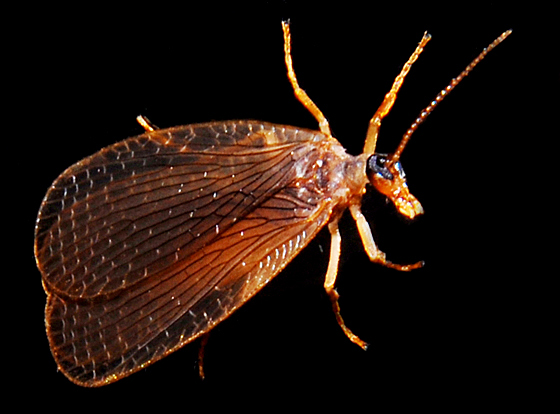Classification
Domain: Eukarya: The Merope tuber is
a multi-cellular organism with eukaryotic cells.
Kingdom: Animalia (Animals)- The Merope tuber is multi-cellular, eukaryotic and has a fixed body plan which give it distinct animal features
Phylum: Arthropoda (Arthropods)- The Merope tuber, like all arthropods, has an exoskeleton with jointed appendages and segmented bodies that are made of chitin. (Gorhd 2001)
Class: Insecta (Insects)- The Merope tuber, like all insects has a three part body, jointed legs, compound eyes, and two antennae. (Gorhd 2001)
Order: Mecoptera (Scorpionflies, Hangingflies and Allies)-The Merope tuber, like many Mecoptera are consumers of dead organisms, abdomen with eleven segments, head is prolonged into a rostrum, and have a relatively short periods of time for hatching. (Arnet 2000)
Family: Meropeidae (Forcepflies)- Only two living species, The North American Merope tuber and the Western Australian Austromerope poultoni. They are characterized by receding jaws that are partially concealed by the Pronotum (dorsal surface on the first thoracic segment). The biology of these is relatively unknown and their larvae have not been seen. (Gorhd 2001)
Genus Merope-The Merope tuber is the only species in this genus and it is known for its segmented cerci on the male abdomen. (Gorhd 2001)
Species: tuber (Forcepfly)- see above
Latin Name: Merope means Forcepfly, meaning that the cerci has been modified like that of an earwig. Tuber is Latin for swelling, hump or protuberance and this is a reference to the jugum. (Pachal 2011)
Common Name: Its common name, the “earwigfly” is derived from the male genital claspers which resemble the pinching cerci of dermapterans (earwigs). It’s currently under investigation how these claspers are involved in the mating process. Females look very similar to males but lack the forceps-like claspers. (Marshall 2006)
The Merope tuber from the side


